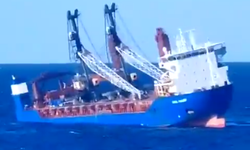The most recent spike was influenced by Houthi attacks on ships in the Red Sea, forcing most vessels to take the longer Cape of Good Hope route between East Asia and Europe. This Red Sea issue followed a period of low water in the Panama Canal system, which reduced the number of transits and led some ships to take longer alternative routes.
While the near-term outlook for shipping rates is favorable for shippers, the longer-term trends are less optimistic.
Shipping expert Sal Mercogliano explained in a video call that rising environmental standards and the obsolescence of the existing fleet will necessitate the construction of more new ships, which will also need to travel slower. The International Maritime Organization now requires ships to log their carbon emissions, and vessels with poor scores will not be allowed in many ports, including in Europe. Compliance with these regulations will require new ships.
Many ships are already "slow steaming" to reduce fuel usage, as slower speeds reduce a ship's fuel consumption per mile traveled. However, a ship built for slower speeds is even more fuel-efficient than a ship designed for fast travel that cuts its speed. Optimization for slow steaming involves both hull design and engine systems, which are not amenable to aftermarket fixes, according to Mercogliano. Additionally, new ships are often specified with "dual fuel" systems, allowing them to use methanol, ammonia, or liquefied natural gas as alternatives to diesel fuel. These alternative fuels vary in the amount of energy they produce and the carbon they release per unit of energy, often being more environmentally friendly. Outside of shipping, new goals and standards to reduce global warming have been relaxed or delayed as the costs became clearer. However, Mercogliano doubts this will happen with maritime rules, at least in the immediate future.
Slower steaming means that more shipping capacity will be needed to move a given volume of cargo. Coupled with the need to scrap older, less efficient vessels, a significant number of new ships must be built.
Fortunately, shipbuilders are experiencing a boom in orders. The BRS Annual Review, which covers ship activity in detail, reports that the total tonnage of ships ordered in 2023 jumped 16% over the previous year’s figure. The division was roughly typical, with bulk carriers being the largest category, followed by tankers. Container ships and other types make up the rest of the total. News reports from the first half of 2024 indicate that orders remain strong.






